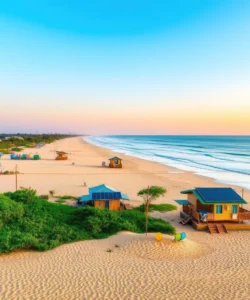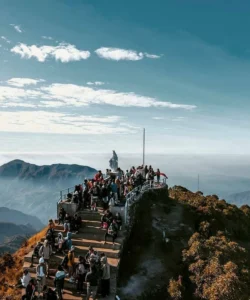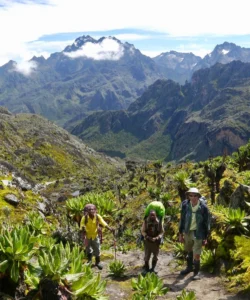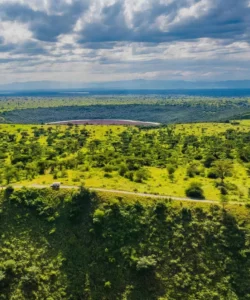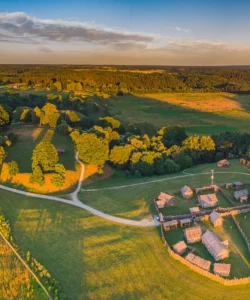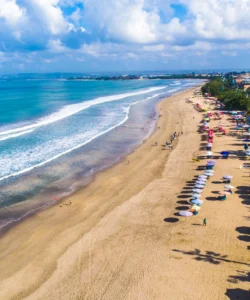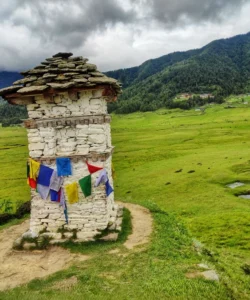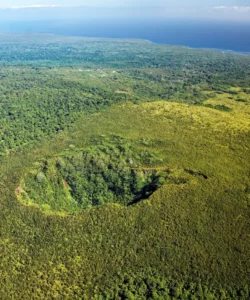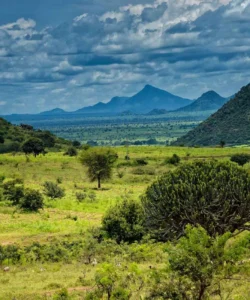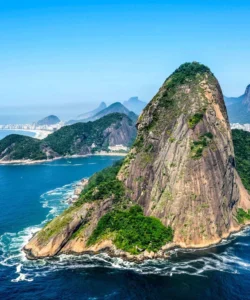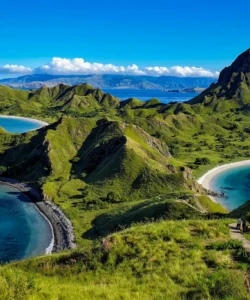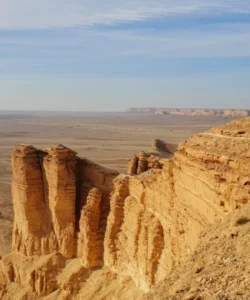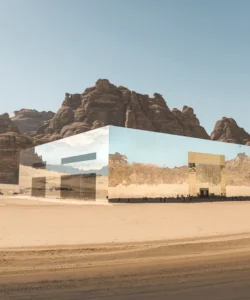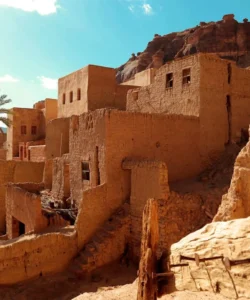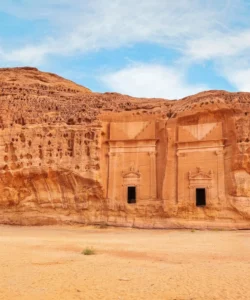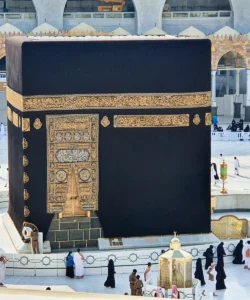Chitwan National Park, nestled in the subtropical lowlands of Nepal’s Terai region, is a premier wildlife sanctuary and a UNESCO World Heritage Site. Established in 1973, it holds immense importance for its conservation efforts, particularly in protecting endangered species like the greater one-horned rhinoceros and the Bengal tiger.
Name: Chitwan National Park (Nepali: चितवन राष्ट्रिय निकुञ्ज)
Address: Kasara, Chitwan District, Nepal. The park encompasses parts of the Nawalpur, Chitwan, Makwanpur, and Parsa Districts. The primary tourist hub and gateway is Sauraha, located just outside the park’s eastern boundary, near the Rapti River. The park headquarters are at Kasara.
How to Get There:
Chitwan National Park is well-connected from major cities in Nepal.
- By Air: The closest airport is Bharatpur Airport (BHR), located about 10 km (6 miles) from Sauraha. Domestic flights operate from Kathmandu (approx. 25 minutes) and Pokhara (approx. 20 minutes). From Bharatpur Airport, taxis or pre-arranged hotel transfers are available to Sauraha.
- By Tourist Bus (Recommended): This is the most popular and affordable way for visitors. Dedicated tourist buses run daily from:
- Kathmandu: Approximately 5-7 hours. Buses usually depart early in the morning (around 6:30 AM – 7:00 AM) from tourist bus parks in Thamel/Kantipur.
- Pokhara: Approximately 4-6 hours. Buses depart from Pokhara’s tourist bus stand in the morning.
- These buses generally drop you off directly in Sauraha.
- By Private Vehicle: Hiring a private car or jeep from Kathmandu or Pokhara offers more flexibility and comfort. The drive typically takes around 5 hours.
- By Raft: Some adventure tourism companies offer multi-day rafting trips on the Trishuli River that can end near Chitwan, combining whitewater adventure with wildlife safari.
- Within the Park: Exploration inside the park is done through organized safaris and activities:
- Jeep Safaris: The most popular way to cover ground and spot larger mammals. Conducted in open jeeps with experienced naturalists.
- Canoeing: Traditional dugout canoe rides on the Rapti or Narayani Rivers offer a peaceful way to spot crocodiles (gharials and muggers), aquatic birds, and other wildlife along the riverbanks.
- Jungle Walks/Nature Walks: Guided walks with armed park rangers allow for closer encounters with flora and smaller fauna, and learning about the jungle ecosystem.
- Elephant Safari: Historically popular, riding elephants through the tall grasslands offers a unique elevated perspective for wildlife viewing. (Note: Ethical concerns regarding elephant welfare have led some operators and visitors to opt for jeep safaris or walking instead).
- Entrance Fee: A park entry fee is required for all visitors. This is usually covered in package tours from resorts.
Landscape and Architecture:
Chitwan National Park’s “landscape” is a pristine vestige of the Terai region, exhibiting a rich diversity of subtropical lowland ecosystems. Its “architecture” is almost entirely natural, shaped by rivers and vegetation, with a subtle human presence integrated through traditional Tharu villages.
- Subtropical Lowlands (Terai): The park is situated in the central Terai belt of south-central Nepal, characterized by a warm, subtropical climate. Elevations range from about 100 meters (330 ft) in river valleys to 815 meters (2,674 ft) in the Siwalik Hills (outer Himalayas) that form its northern boundary.
- Dominant Sal Forests: Approximately 70% of the park is covered by Himalayan subtropical broadleaf forests, predominantly composed of towering Sal trees (Shorea robusta). These forests form a dense green canopy, providing crucial habitat.
- Riverine Forests: Along the banks of the major rivers (Narayani/Gandaki, Rapti, and Reu), you’ll find riverine forests with trees like silk cotton, sissoo, and rosewood. These areas are vital for many animal species, particularly rhinos and tigers.
- Vast Grasslands (Phantas): The park features extensive stretches of tall, alluvial grasslands, locally known as “phantas.” These grasslands, including the impressive “elephant grass” (Saccharum spp.) that can reach up to 8 meters (26 feet) high, serve as crucial grazing grounds for herbivores and provide excellent cover for predators.
- Rivers and Wetlands: The Narayani River (Nepal’s third-largest) forms the western boundary, and the Rapti River forms the northern boundary. These rivers, along with numerous smaller streams and wetlands, create a vital network of aquatic habitats for crocodiles, gharials, and numerous bird species. The rivers are characterized by their dramatic river terraces composed of layers of boulders and gravel.
- Siwalik Hills: The southernmost range of the Himalayas, the Siwalik Hills, forms the northern boundary of the park, adding a backdrop of forested hills and contributing to the varied topography.
- Tharu Villages (Cultural Landscape): The park and its buffer zones are home to the indigenous Tharu community. Their traditional villages, with their unique mud, bamboo, and thatch houses (often ochre-colored with no chimneys or many windows), are part of the cultural landscape. These villages showcase a distinct architectural style adapted to the local climate.
- Watchtowers (Machan): Elevated wooden watchtowers (machan) are strategically placed within the park, often near watering holes or salt licks, allowing visitors and researchers to quietly observe wildlife.
- Elephant Breeding Center: A man-made facility dedicated to the breeding and care of elephants, contributing to conservation efforts.
What Makes It Famous:
- UNESCO World Heritage Site: Designated in 1984, Chitwan National Park is recognized for its outstanding universal value, particularly for its exceptional biodiversity and its role in protecting endangered species.
- Population of Greater One-Horned Rhinoceros: It is home to one of the last populations of the critically endangered greater one-horned rhinoceros, and boasts the second-largest population of this species in the world. Conservation efforts have led to a significant increase in their numbers, making rhino sightings relatively common and a major highlight.
- Refuge for Bengal Tiger: Chitwan is one of the last and most important refuges for the Royal Bengal Tiger. While elusive and difficult to spot, the possibility of a tiger sighting attracts many wildlife enthusiasts.
- Rich Biodiversity: The park is exceptionally rich in flora and fauna, harboring 31% of Nepal’s mammals (over 68 species), 61% of its birds (over 540 species, making it a birdwatcher’s paradise), and a significant number of reptiles and amphibians (including the critically endangered Gharial crocodile and the mugger crocodile). It is considered a global biodiversity hotspot.
- Pioneering Conservation Success: Established in 1973 as Nepal’s first national park, Chitwan has a strong legacy of successful conservation, particularly in recovering rhino and tiger populations through anti-poaching efforts and community involvement.
- Diverse Safari Experiences: It offers a unique combination of wildlife viewing activities, including jeep safaris, canoeing, guided jungle walks, and elephant safaris (though the latter has ethical considerations), providing varied ways to explore the jungle.
- Tharu Cultural Immersion: The opportunity to experience the unique culture, traditions, and simple way of life of the indigenous Tharu people through village tours and cultural programs (like the Tharu stick dance) adds a rich cultural dimension to the wildlife experience.
- Scenic Natural Beauty: The spectacular landscape, with its lush vegetation, changing riverine environments, and the backdrop of the Siwalik Hills, offers exceptional natural beauty.
Differences from Some Other Wonders:
- Focus on Rhinos and Tigers (Specific Terrestrial Mammals): While other parks might have diverse wildlife, Chitwan’s fame is singularly tied to its success in conserving and its high populations of greater one-horned rhinoceroses and Bengal tigers. This makes it a primary destination for seeing these specific endangered megafauna in their natural habitat, differentiating it from parks that focus on broader biodiversity or different iconic species (e.g., Komodo dragons).
- “Terai” Lowland Ecosystem: Unlike high-altitude Himalayan parks (Sagarmatha National Park, Jim Corbett, Deosai Plains) or humid rainforests (Taman Negara), Chitwan represents the unique subtropical lowland Terai ecosystem, characterized by specific types of broadleaf forests (Sal) and tall grasslands.
- Variety of Safari Modes: While other parks offer safaris, Chitwan provides a diverse range of jeep, canoe, and walking safaris within one park, giving visitors multiple perspectives of the wildlife and environment.
- Tharu Cultural Integration: The strong and accessible cultural element of the indigenous Tharu people, with their unique traditional architecture and daily life directly interacting with the park, provides a distinct cultural immersion that is a major draw alongside the wildlife.
- Absence of Extreme Altitude Challenges: Unlike Himalayan parks where altitude sickness is a concern, Chitwan’s lowland setting makes it accessible to a wider range of visitors without altitude-related health risks.
- Rivers as Key Habitat: The Narayani and Rapti rivers are integral to the park’s ecosystem, providing crucial habitats for aquatic species like Gharial crocodiles and acting as natural boundaries, a defining feature distinct from purely forest or grassland parks.
- No Iconic Single Monumental Architecture: While it has Tharu villages, the park’s “wonder” is overwhelmingly natural and biological, rather than encompassing grand historical monuments or architectural masterpieces like temples or palaces.
Chitwan National Park Photos:































